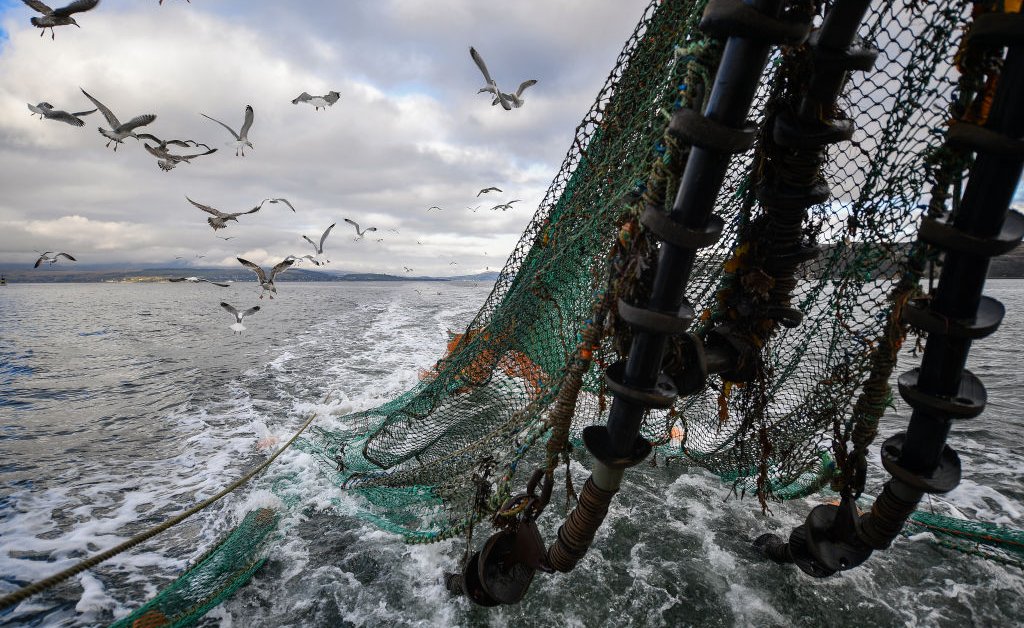The Role Of AI In Combating Ocean Pollution And Protecting Marine Life

Welcome to your ultimate source for breaking news, trending updates, and in-depth stories from around the world. Whether it's politics, technology, entertainment, sports, or lifestyle, we bring you real-time updates that keep you informed and ahead of the curve.
Our team works tirelessly to ensure you never miss a moment. From the latest developments in global events to the most talked-about topics on social media, our news platform is designed to deliver accurate and timely information, all in one place.
Stay in the know and join thousands of readers who trust us for reliable, up-to-date content. Explore our expertly curated articles and dive deeper into the stories that matter to you. Visit Best Website now and be part of the conversation. Don't miss out on the headlines that shape our world!
Table of Contents
The Role of AI in Combating Ocean Pollution and Protecting Marine Life
The world's oceans are facing an unprecedented crisis. Pollution, from plastic waste to chemical runoff, is devastating marine ecosystems and threatening the survival of countless species. But a new weapon is emerging in the fight for cleaner seas: Artificial Intelligence (AI). This innovative technology is proving invaluable in monitoring pollution, identifying its sources, and ultimately, helping us protect our oceans and the precious marine life within.
AI-Powered Monitoring: A Giant Leap for Ocean Conservation
Traditional methods of monitoring ocean pollution are often slow, expensive, and limited in scope. AI is changing this dramatically. Sophisticated algorithms can analyze vast amounts of data from various sources, including:
- Satellite imagery: AI can identify patterns of pollution, like oil spills or plastic accumulation, from satellite images with unprecedented accuracy and speed. This allows for quicker response times to environmental disasters.
- Underwater sensors and drones: Equipped with AI-powered image recognition, these technologies can monitor pollution levels in real-time, identifying specific pollutants and their concentrations. This provides crucial data for targeted cleanup efforts.
- Acoustic monitoring: AI can analyze underwater soundscapes to detect the presence of marine mammals and other species, helping researchers understand how pollution affects their behavior and habitats. This data is critical for conservation efforts.
These AI-powered monitoring systems offer a level of comprehensive surveillance previously unattainable, providing a clearer picture of the extent and impact of ocean pollution than ever before.
Identifying Pollution Sources: Tracing the Problem Back to its Roots
Knowing where pollution is located is only half the battle. AI is also instrumental in pinpointing where it comes from. By analyzing data from multiple sources, AI can identify potential sources of pollution, such as:
- Industrial discharges: AI can analyze data on industrial activity and correlate it with pollution levels to identify potential polluters.
- Agricultural runoff: AI can model the flow of pollutants from agricultural fields into waterways, helping to identify areas needing improved farming practices.
- Plastic waste sources: AI can track the movement of plastic waste in the ocean, helping to identify its sources and develop strategies to prevent its entry into the marine environment.
This ability to trace pollution back to its source is crucial for implementing effective preventative measures and holding polluters accountable.
Predictive Modeling: Forecasting and Preventing Future Problems
AI's power extends beyond monitoring and identification. AI-powered predictive models can forecast the movement of pollutants and the potential impact of future pollution events. This allows for proactive measures, including:
- Predicting oil spill trajectories: AI can predict the spread of oil spills, allowing for more efficient cleanup efforts and minimizing environmental damage.
- Forecasting plastic accumulation zones: AI can help predict where plastic will accumulate in the ocean, enabling targeted cleanup operations and preventative strategies.
- Assessing the impact of climate change: AI can model the effects of climate change on ocean ecosystems and pollution patterns, providing crucial information for long-term conservation planning.
The Future of AI in Ocean Conservation
The application of AI in combating ocean pollution is still in its relatively early stages, but the potential is immense. As AI technology continues to advance, we can expect even more innovative applications to emerge, offering us a stronger chance of protecting our oceans for future generations. Further research and collaboration between scientists, engineers, and policymakers are crucial to unlock the full potential of AI in this critical fight.
Call to Action: Learn more about organizations dedicated to ocean conservation and consider supporting their efforts to protect our precious marine environments. Even small actions can make a big difference.

Thank you for visiting our website, your trusted source for the latest updates and in-depth coverage on The Role Of AI In Combating Ocean Pollution And Protecting Marine Life. We're committed to keeping you informed with timely and accurate information to meet your curiosity and needs.
If you have any questions, suggestions, or feedback, we'd love to hear from you. Your insights are valuable to us and help us improve to serve you better. Feel free to reach out through our contact page.
Don't forget to bookmark our website and check back regularly for the latest headlines and trending topics. See you next time, and thank you for being part of our growing community!
Featured Posts
-
 Trump Newsom Battle Intensifies As L A Police Make Mass Arrests During Downtown Protests
Jun 13, 2025
Trump Newsom Battle Intensifies As L A Police Make Mass Arrests During Downtown Protests
Jun 13, 2025 -
 Global Focus On Europe French Minister Calls For Resistance
Jun 13, 2025
Global Focus On Europe French Minister Calls For Resistance
Jun 13, 2025 -
 Hegseth Defiant Uncertain On Respecting La National Guard Deployment Ruling Ahead Of Hearing
Jun 13, 2025
Hegseth Defiant Uncertain On Respecting La National Guard Deployment Ruling Ahead Of Hearing
Jun 13, 2025 -
 Extended Coverage Press Conference Reveals Future Of The Korn Ferry Tour
Jun 13, 2025
Extended Coverage Press Conference Reveals Future Of The Korn Ferry Tour
Jun 13, 2025 -
 Third Trial For Lori Daybell The No Plan No Gain Defense In Focus
Jun 13, 2025
Third Trial For Lori Daybell The No Plan No Gain Defense In Focus
Jun 13, 2025
